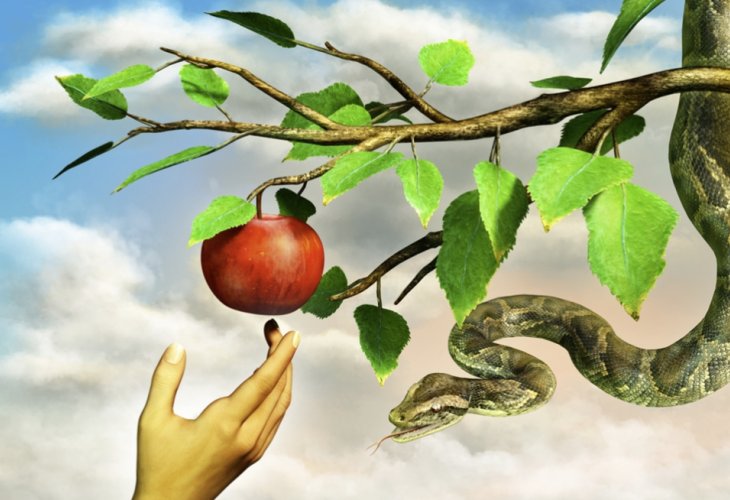Torah Personalities
Chava: The First Woman and the Legacy of Her Choices
From her name to her role in Creation, Chava's story reveals profound insights into the nature of women, human speech, and spiritual repair
 (Photo: Shutterstock)
(Photo: Shutterstock)What’s in a Name? The Deeper Meaning of Chava
The Torah introduces Chava as "em kol chai," the mother of all living things (Bereishit 3:20). Adam gives her the name "Chava," connecting her to life itself. But many commentators ask: why not name her "Chaya," which more directly means “alive”?
Some explain that the name Chava echoes the Aramaic word Chivya, meaning “serpent.” According to this view, the original serpent—who led her astray—gave her the name, linking her identity to that transgression. Others suggest Chava alludes to the pain of childbirth, a direct result of her actions: “In sorrow you shall bear children.”
Another explanation draws from a core human trait of speech. Of all living beings, only humans can speak. One interpretation sees Chava as related to the Hebrew word for “expression” or “speaking,” emphasizing her role not just as the mother of humanity, but as the one who embodies the power of language.
The Second Woman: Chava’s Surprising Predecessor
Midrashic sources reveal a lesser-known detail: Chava wasn’t Adam’s first wife. According to Bereishit Rabbah (22:7), an earlier woman, sometimes referred to as “the first Chava,” was created from the same earth as Adam. Seeing herself as his equal, she resisted him, and the relationship collapsed. She eventually left and became a destructive force in the world.
A different version explains that Adam witnessed her creation, saw her raw and unformed, and rejected her. To prevent this from happening again, Hashem put Adam into a deep sleep before forming Chava, this time from his rib, not from dust. Adam immediately accepted her, declaring, “This time, she is bone of my bones and flesh of my flesh” (Bereishit 2:23). That phrase, "this time," refers to the second attempt to find Adam a true partner.
The Message of the Rib
A beautiful Midrash (Tanchuma, Vayeshev 6) describes Hashem pondering which part of Adam’s body to use when forming Chava. Each option had symbolic implications and drawbacks:
If she was created from his head, she might be arrogant
If she was created from his eye, she might be too curious
If she was created from his mouth, she might be too talkative
If she was created from his ear, she might be overly submissive
If she was created from his hand, she might be a thief
If she was created from his foot, she may be aimless or wanderlust-filled
In the end, Hashem chose to create her from the rib, a hidden and modest place, to symbolize the ideal of tzniut (modesty) and inner strength in the female character.
A Celestial Wedding: Chava’s First Encounter with Adam
The Midrash paints a moving picture of Chava’s presentation to Adam. Hashem Himself prepared her like a bride, braiding her hair and adorning her with beauty (Bereishit Rabbah 8:13). This act is cited as proof that Hashem blesses grooms and adorns brides.
Chava’s arrival wasn’t a quiet moment; it was a celebration accompanied by heavenly hosts. According to Midrash Otiyot deRabbi Akiva, tens of thousands of angels sang and danced with lyres, cymbals, and harps. Even the sun, moon, stars, and constellations rejoiced. This wasn’t just a union of two people. It was the creation of humanity’s first relationship.
Women Are Granted Extra Intuition
The Talmud (Niddah 45b) notes that when Hashem “built” Chava from Adam’s side (Bereishit 2:22), the Hebrew word used implies not just construction but insight. From this, the sages learn that women were granted "binah yeteirah," an additional measure of intuitive understanding.
“If I Die, We Die Together”: Chava and the Tree of Knowledge
After eating from the Tree of Knowledge, Chava gave the fruit to Adam. Rashi explains her reasoning: she feared dying while Adam lived on and married someone else. She thought, “Better we both share the same fate.”
Midrashic sources elaborate that once she ate, she saw the Angel of Death approaching. Fearing that Hashem would replace her as He had created her, she gave the fruit to Adam so they would face the consequences together. As Pirkei deRabbi Eliezer puts it: “If I die, we die together. And if I live, we live together.”
Ten Curses, Ten Consequences
As a result of Chava’s actions, the Talmud (Eruvin 100b) lists ten hardships decreed on women:
Menstrual blood
Virginity blood
The challenge of raising children
The burden of pregnancy
The pain of childbirth
Longing for one’s husband
His dominance over her
Obligatory head covering
Social withdrawal
Confinement to the home
These decrees are seen as spiritual consequences of her role in the sin.
Three Mitzvot as Spiritual Repair
In Jewish tradition, three core mitzvot (Divine commandments) are uniquely associated with women: lighting Shabbat candles, separating challah (a designated portion of dough), and observing niddah (the laws of family purity). Each corresponds to an aspect of Chava’s sin and offers a path of tikkun (repair).
Adam was called “the lamp of the world”—Chava extinguished that light, and women now rekindle it weekly.
He was the “pure dough” of Creation—Chava defiled it, and women now sanctify dough through separation.
Adam’s blood represented life—Chava brought death, and women are entrusted with niddah, a cycle of spiritual renewal.

